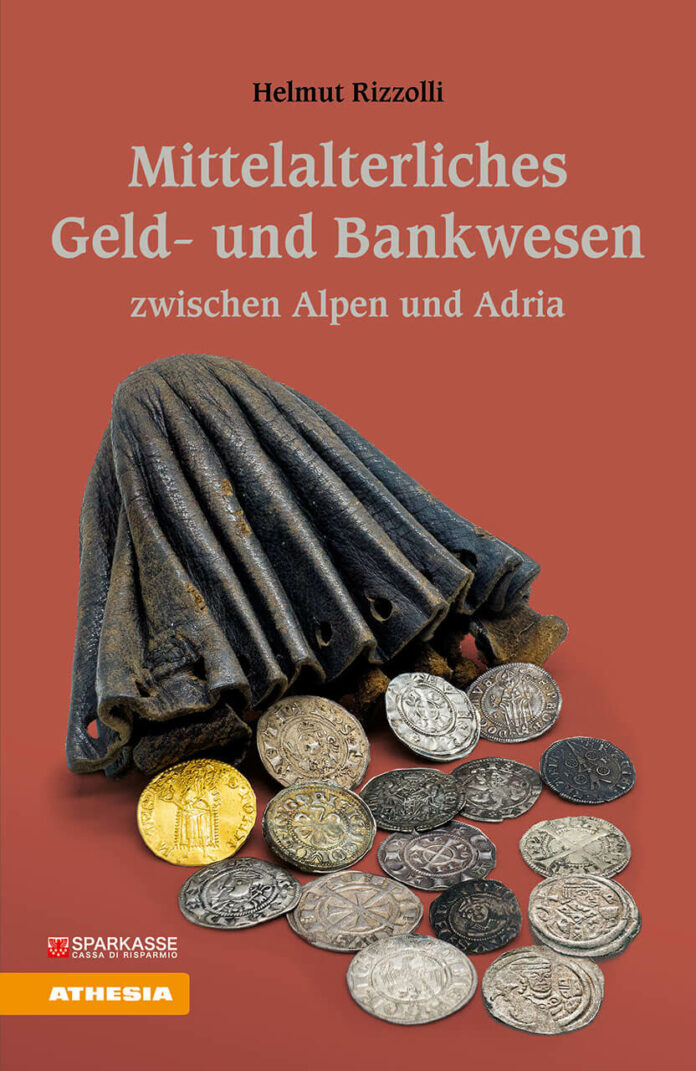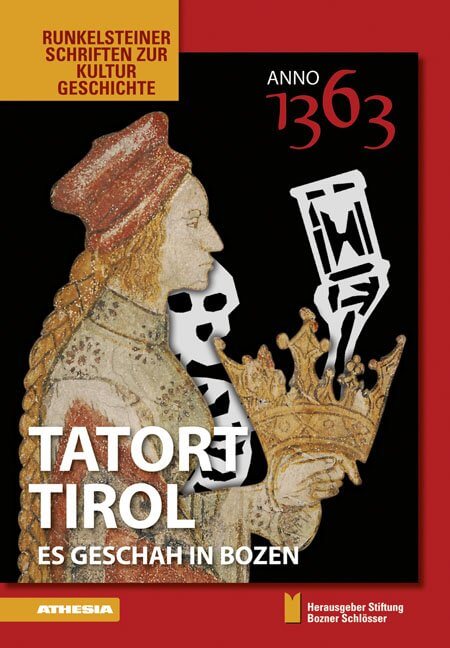
There are books that are so large that we can’t even fit them on our scanner to scan the title page. There are books where I have to read every page twice until I finally understand it. There are books that – under the guise of being straightforward to understand – are just poorly researched. Helmut Rizzolli’s latest work entitled “Mittelalterliches Geld- und Bankwesen zwischen Alpen und Adria” (Medieval Money and Banking Between the Alps and the Adriatic Sea) is nothing of the sort. It’s a handy book that is written in understandable language and that summarises the latest research findings on one of the major economic areas of the Middle Ages. And what’s best: the Savings Bank of South Tyrol financed the book, which is why it can be purchased for the nominal fee of only 20 euros.
A Transit Region Between Italy and the German Territories
Only a few of those people who hike through the Dolomites on well-signposted trails realise that they are moving through an area that was a highly active trading region 700 years ago. A region that did not only produce wine, which was already extremely popular in the Middle Ages, but also played a key role as a place of transhipment for goods from the north and the south. Merchants met in Merano and Bolzano. They needed a stable currency, and this currency came into being thanks to the coins of the Veronese currency area – a field that was examined in 2015 by a detailed study conducted by Helmut Rizzolli and Federico Pigozzo. The extensive work of more than 700 pages was awarded an IAPN book prize, gained the attention of scholars but – as it is the case with most numismatic books – did not attract the interest of a broad public.
Conveying knowledge to a broad public, however, is something that is very close to Helmut Rizzolli’s hear. That’s why he makes an effort to position his scholarly findings at places that can be accessed easily. Therefore, he is one of the few numismatists who manage to create a public podium for numismatics and economic history. He succeeds in this because he is much more than “just” an outstanding numismatist. He also has excellent connections and knows the South Tyrolean cultural and museum landscape like nobody else. As President of the Bolzano Castles’ Foundation and former Bolzano City Councillor for Economic Activities and Tourism, time and again he gathers stakeholders for the sake of numismatics, creating a resonance space that numismatics only occupy in a few places in the world.
A Coin Hoard and a Savings Bank
Do you think I’m exaggerating? Well, here are the facts and figures. Supposedly around 1840, a coin hoard hidden just before 1329 was discovered near Padova, containing 4,033 coins of South Tyrolean currency. To ensure that this old hoard remained together and was available to see for the public, the Savings Bank of South Tyrol decided in 1986 to acquire the entire hoard. Large parts of it were and are now again on display as a permanent exhibition at the bank’s Bolzano branch at Waltherplatz. In addition, there is a digital offer financed by the savings bank and a book – the very book we present to you today.
As the president of the Savings Bank of South Tyrol Gerhard Brandstätter explained during the presentation of the book, the coin hoard is part of the PR concept for customer bonding of his company. Indeed, it is planned “for this exhibition to circulate between all our branches in the Upper Italian region as a kind of traveling exhibition.” What an excellent opportunity for numismatics to attract the attention of the broad public!
A Useful Manual
What else can I say about the manual? Perhaps that it is one of very few books that I already consulted several times before I moved it from the shelf where I keep the books I want to review to those of my regular library? To be honest, this does not happen very often.
Helmut Rizzolli has succeeded in compiling all the information you need on mints and coin types in a very compensated form. Arranged by currency areas, he presents the individual mints whose coins circulated in South Tyrol one by one. They include Innsbruck and Brixen (Augsburg currency area), Lienz, Latisana, Toblach and Aquileia (Aquileia currency area), Verona, Trento, Merano – including imitations – and Hall (Veronese currency area) as well as Padova and Treviso on the border to the Venetian currency area.
For every mint there is a brief summary of its history, followed by short descriptions of its coin types. Special attention was paid to the illustrations. With the help of specimens of perfect condition, excellent pictures and enlargements, even laymen without numismatic experience can identify the coins.
To sum up, I can only say: ceterum censeo! We need more books like this in the numismatic world! We need more institutions like the Savings Bank of South Tyrol, which understand local monetary history to be as an ideal means of advertising! And we need more people like Helmut Rizzolli! After all, numismatics thrives on the commitment of every coin enthusiast.
By the way: the Savings Bank of South Tyrol has of course also published an Italian version of the work. It is entitled “Monete e banche medievali tra Alpi e l’Adriatico” and can also be purchased for 20 euros.
You can order the book directly from the publishing house.
Here you can take a look inside the book.
This link takes you to the Italian version.
Of course, you can also purchase the treatise on the Veronese currency area.
This work is available in Italian too. Here you can find the Italian version.
The book was published in the “Runkelsteiner Schriften zur Kulturgeschichte” series. My favourite volume of this series is “Tatort Tirol”. It explains in detail how Duke Rudolf IV of Habsburg financed the acquisition of Tyrol.
You can find Helmut Rizzolli in our Who’s Who.








